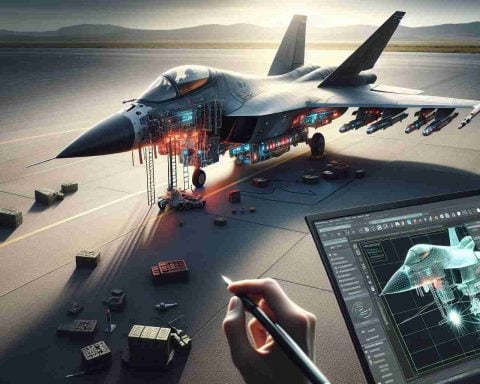The Indian Air Force (IAF) is facing significant setbacks in its operational readiness due to delays in the induction of Tejas Mark-1A fighter jets. Originally expected to receive 16 jets by the 2024-25 fiscal year, the IAF will now receive only two to three, largely because of engine supply issues.
Primary Cause: Engine Supply Delays
The delay stems from supply chain issues faced by General Electric (GE) in delivering the crucial GE-F404 turbofan jet engines. The supply, now projected to begin by March 2025, is two years behind schedule. During recent visits to the US, Indian leaders emphasized the urgency of this matter, prompting GE to promise expedited delivery solutions.
Negotiations and Future Plans
Meanwhile, Hindustan Aeronautics Limited (HAL) and GE are finalizing plans for co-producing the more advanced GE-F414 engines in India. This effort involves an 80% technology transfer, valued around $1 billion, and is expected to be finalized this fiscal year. Integration challenges also persist as the Tejas jets undergo weapon and radar system enhancements, contributing to the delay.
Broader Implications for the IAF
This delay is a significant blow to the IAF, which currently operates with 30 fighter squadrons instead of the sanctioned 42.5, as it faces regional threats. Plans to acquire 180 Tejas Mark-1A and 108 Mark-2 jets over the next 15 years aim to remedy this shortfall.
Additional Challenges
The IAF’s broader plans for acquiring 114 4.5-generation fighters in collaboration with international partners face bureaucratic hurdles. Political controversies surrounding procurement processes have led to a reevaluation of procurement strategies to ensure transparency and efficiency.
India continues to pursue ambitious aviation projects, including a future fifth-generation stealth fighter, symbolizing its commitment to enhancing defense capabilities despite current setbacks.
India’s Aviation Challenge: The Ripple Effects of Fighter Jet Delays
The Indian Air Force (IAF) is navigating turbulent skies, grappling not only with delayed deliveries of Tejas Mark-1A fighter jets but a series of cascading impacts that may reshape its future operational capabilities. While much buzz has been around the GE-F404 engine supply issues, there are numerous other angles to consider, each shedding light on how such obstacles influence regional and global dynamics.
Impact on India’s Defense Posture and Domestic Industry
The delay in receiving Tejas Mark-1A jets profoundly affects India’s defense readiness. Operating only 30 fighter squadrons versus a required 42.5, India’s air defense faces a quantitative and qualitative gap that might embolden regional adversaries. This inadequacy could necessitate a temporary reliance on existing, perhaps outdated, technologies, thereby putting pressuring existing fleet maintenance schedules.
On the domestic front, Indian aerospace firm Hindustan Aeronautics Limited (HAL) is deeply impacted. Prolonged delivery timelines strain HAL’s production lines and can potentially reverberate through its supply chain, affecting numerous smaller businesses and workers reliant on this manufacturing cycle.
Global Perspectives and Strategic Realignments
The delays and supply chain issues also offer a window into geopolitical maneuverings. India’s engagement with GE for the local production of GE-F414 engines reflects a strategic pivot toward increasing self-reliance, aiming to reduce dependencies on foreign entities amid rising global uncertainties. This move, if successful, may position India as an emerging hub for aerospace manufacturing.
However, these collaborations highlight a broader question: Could India’s military partnerships with Western countries face strain, especially if technological transfers fall short or if delays are not resolved amicably?
Interesting Facts and Controversies
– Fact: The Tejas fighter jet program, begun in the 1980s, has experienced multiple design, development, and production setbacks, reflecting the challenges of indigenous warplane development.
– Controversy: Criticism toward the procurement processes often hints at systemic inefficiencies, raising questions about transparency and efficacy in defense spending.
– Advantage: Co-production of advanced engines may provide a valuable learning curve for local engineers and workers, promoting technological advancements within India.
– Disadvantage: Delays may undermine international confidence in India’s ability to meet defense commitments, affecting future collaborations.
Addressing Key Questions
– Why are these delays significant beyond India’s borders?
The delay can create regional power vacuums, potentially shifting defense strategies among neighboring countries and impacting global defense alliances.
– What are the risks if such delays persist?
Prolonged inadequacies in operational squadrons may attract unfavorable diplomatic pressure and necessitate increased defense allocations, impacting other areas of national expenditure.
Conclusion
The engine supply delays are undeniably problematic, but the ripple effects are far-reaching, touching every aspect of Indian defense preparedness and industrial capability. As India meticulously scouts avenues to mitigate these issues, the world watches closely, intrigued by how one of the world’s fastest-growing economies and military spenders maneuvers through these skies of uncertainty.
For more on India’s aerospace initiatives: Hindustan Aeronautics Limited, General Electric.



















